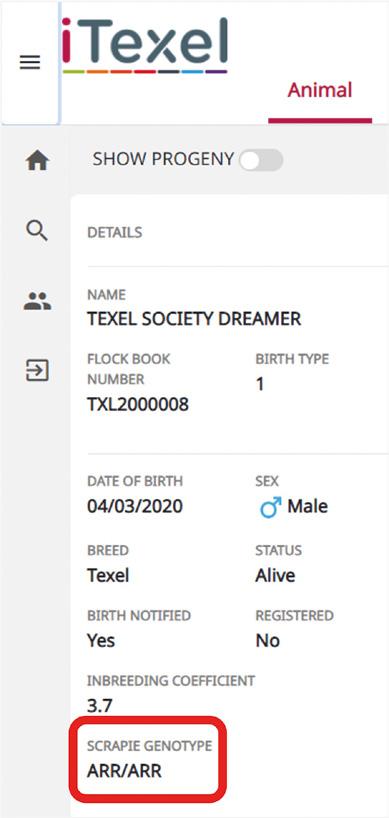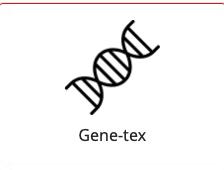
3 minute read
Changes in Texel scrapie profile
Shift in Scrapie genotypes
Breeding decisions taken by Texel breeders over the last 20 or so years have resulted in a significant improvement in the profile of Scrapie genotypes within the breed, benefitting both breeders and their customers across the UK. Data from Scrapie genotype testing conducted on rams registered with the Society over the last three years shows that more than 84% of rams tested carry at least one copy of the most resistant ARR allele, compared to 33.4% of Texel sheep tested by the National Scrapie Plan between 2001 and 2003, explained Society data and technical services manager Ed Smith.
Advertisement
“This vast change in the distribution of the ARR allele within the breed, more than 250% improvement, has also resulted in a huge uplift in the proportion of Texel rams now ranked in the most scrapie resistant type one category ARR/ARR, with more than 71% of rams now in this category, compared to about 12% of those animals tested in 2001-03.
“It is important to remember that the recent data only relates to a relatively small number of rams whereas the NSP data included a significant number of animals from across the breed. However, with such a high proportion of ARR/ARR sires being used to breed pedigree stock, it stands to reason that the ARR/ARR genetics will be widely spread across the breed,” said Dr Smith.
Conversely, the increase in the proportion of ARR alleles within the breed has resulted in a dramatic downshift in the proportions of more susceptible alleles within the breed. The ARH allele which was present in more than 43% of animals tested by the NSP in 2001-03 is now only found in less than 2% of rams tested, while the ARQ allele which had a frequency of more than 15% under the NSP is now found in less than 0.1% of rams sampled.
Dr Smith said these improvements were a great achievement for breeders and the breed and would in turn help reduce the incidence of Scrapie within the breed and the UK sheep industry as a whole. “With the Texel breed accounting for more than 27% of all rams used in GB and being the sire of 17% of all ewes in the national flock, improvements made in any genetic parameter within the Texel breed have a huge impact and benefit on the wider industry. “Making the UK flock more resilient to diseases such as Scrapie is hugely important in delivering a sustainable sheep industry for the future,” he added.
% Frequency of scrapie alleles in Texel sheep
Allele
ARR AHQ ARH ARQ VRQ
Current
84.01 14.31 1.60 0.05 0.03
NSP 2001-03
33.4 4.2 43.7 15.3 3.4
84%
of rams tested carry one copy of ARR allele of rams tested are ARR/ ARR
71%
Scrapie genotypes available for registered sires
The Society is pleased to announce that following a new agreement with Neogen, its genotype service provider, Scrapie genotypes are now available for rams registered in the last two years, explained Dr Smith.
“These genotypes are provided for management purposes only, export genotypes still need to be obtained by working with your vet.
“To access the genotypes available for animals in your flock, click on Genetex when you’re logged in to iTexel and select ‘Scrapie Genotype’ from the Trait Type box at the top of the screen. You will then see all the sheep in your flock that a genotype is available for,” he said.
“To view the genotype for a sheep, simply select the sheep by ticking the box on the right-hand side and then click on ‘View’ near the top of the screen. A popup box will appear so that you can confirm you want to view the genotype and accept the fee (£3 + VAT) for viewing it. Click ‘Confirm’ to proceed, or Cancel to return to the previous screen.
“Clicking confirm will then display the genotype on the Gene-tex page below the sheep’s ID.
“If you wish to publish the information on the sheep’s iTexel page (see example below), on pedigree certificates and in sale charts, select the sheep again and click on ‘Publish’.
“You will be asked to confirm you want to publish the data and clicking confirm will return you to the Gene-tex page. The word ‘Public’ and a globe icon will have appeared above the Scrapie genotype,” added Dr Smith.
The Society hopes members will make use of this new service to support their management and breeding decisions.











